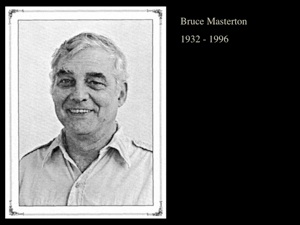
One of the disadvantages of working with Mountcastle – I went there (Johns Hopkins) and gave a talk while Richard Anderson was working with him – I stayed with Richard – and what impressed me was that Mountcastle did everything – and Richard just took notes. Wouldn’t let him do a thing, wouldn’t let him make an electrode, wouldn’t let him make a decision, not a thing. And if the phone rang, and Mountcastle had to answer the phone and go to his office and do something, nothing happened until he got back! So I don’t know if he was the best person to train with, but he was the best person to write a letter of recommendation for you. Woolsey had that same kind of tendency. So I worked with Woolsey for a while at Wisconsin and he had that same kind of tendency, but I escaped it.
At Duke – I’m going back and forth a little bit – Diamond brought a few people with him – Bruce Masterton .

Bruce was going to return to Vanderbilt and do a sabbatical, and just a month before he was going to come, he died. He had done a Master’s with Diamond at the University of Chicago, and had gone to Valparaiso University and taught math for a little bit, and he was ready to come back for a PhD program, and came to Duke quite a while after I had arrived. John Utley was another person and so on. Diamond built up his lab very quickly.
Later, Bruce came to Vanderbilt, and was a star investigator. I think everybody respected him and liked him a lot because I think he was a little older, having taught for a couple years, had experience, he was very confident. He had a whole series of experiments in which cats listened to tones in earphones, and you could put a temporal disparity or intensity disparity using the earphones, and they did a whole series of lesions in different parts of the -auditory system to see when cats could use this disparity information to localize sound. Next Page